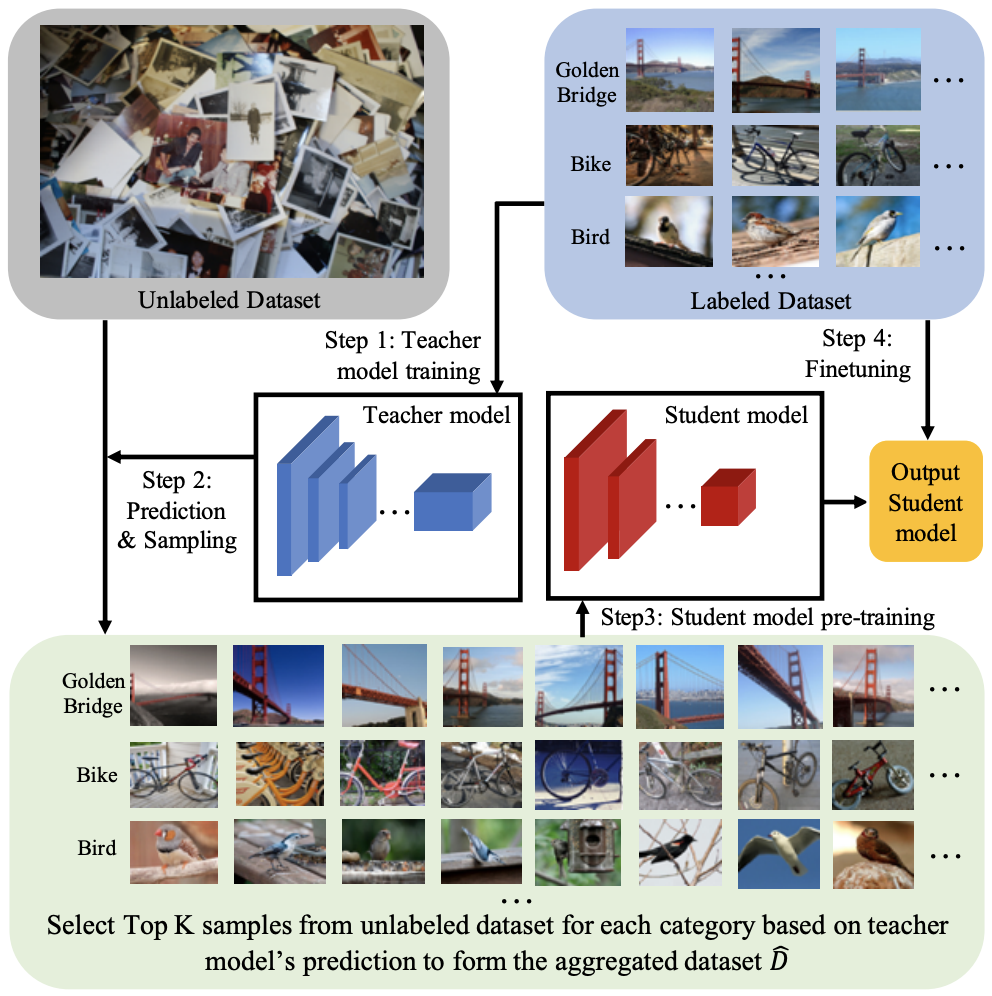import torch
# === SEMI-WEAKLY SUPERVISED MODELS PRETRAINED WITH 940 HASHTAGGED PUBLIC CONTENT ===
model = torch.hub.load('facebookresearch/semi-supervised-ImageNet1K-models', 'resnet18_swsl')
# model = torch.hub.load('facebookresearch/semi-supervised-ImageNet1K-models', 'resnet50_swsl')
# model = torch.hub.load('facebookresearch/semi-supervised-ImageNet1K-models', 'resnext50_32x4d_swsl')
# model = torch.hub.load('facebookresearch/semi-supervised-ImageNet1K-models', 'resnext101_32x4d_swsl')
# model = torch.hub.load('facebookresearch/semi-supervised-ImageNet1K-models', 'resnext101_32x8d_swsl')
# model = torch.hub.load('facebookresearch/semi-supervised-ImageNet1K-models', 'resnext101_32x16d_swsl')
# ================= SEMI-SUPERVISED MODELS PRETRAINED WITH YFCC100M ==================
# model = torch.hub.load('facebookresearch/semi-supervised-ImageNet1K-models', 'resnet18_ssl')
# model = torch.hub.load('facebookresearch/semi-supervised-ImageNet1K-models', 'resnet50_ssl')
# model = torch.hub.load('facebookresearch/semi-supervised-ImageNet1K-models', 'resnext50_32x4d_ssl')
# model = torch.hub.load('facebookresearch/semi-supervised-ImageNet1K-models', 'resnext101_32x4d_ssl')
# model = torch.hub.load('facebookresearch/semi-supervised-ImageNet1K-models', 'resnext101_32x8d_ssl')
# model = torch.hub.load('facebookresearch/semi-supervised-ImageNet1K-models', 'resnext101_32x16d_ssl')
model.eval()
All pre-trained models expect input images normalized in the same way,
i.e. mini-batches of 3-channel RGB images of shape (3 x H x W), where H and W are expected to be at least 224.
The images have to be loaded in to a range of [0, 1] and then normalized using mean = [0.485, 0.456, 0.406]
and std = [0.229, 0.224, 0.225].
Here’s a sample execution.
# Download an example image from the pytorch website
import urllib
url, filename = ("https://github.com/pytorch/hub/raw/master/images/dog.jpg", "dog.jpg")
try: urllib.URLopener().retrieve(url, filename)
except: urllib.request.urlretrieve(url, filename)
# sample execution (requires torchvision)
from PIL import Image
from torchvision import transforms
input_image = Image.open(filename)
preprocess = transforms.Compose([
transforms.Resize(256),
transforms.CenterCrop(224),
transforms.ToTensor(),
transforms.Normalize(mean=[0.485, 0.456, 0.406], std=[0.229, 0.224, 0.225]),
])
input_tensor = preprocess(input_image)
input_batch = input_tensor.unsqueeze(0) # create a mini-batch as expected by the model
# move the input and model to GPU for speed if available
if torch.cuda.is_available():
input_batch = input_batch.to('cuda')
model.to('cuda')
with torch.no_grad():
output = model(input_batch)
# Tensor of shape 1000, with confidence scores over ImageNet's 1000 classes
print(output[0])
# The output has unnormalized scores. To get probabilities, you can run a softmax on it.
print(torch.nn.functional.softmax(output[0], dim=0))
Model Description
This project includes the semi-supervised and semi-weakly supervised ImageNet models introduced in “Billion-scale Semi-Supervised Learning for Image Classification” https://arxiv.org/abs/1905.00546.
“Semi-supervised” (SSL) ImageNet models are pre-trained on a subset of unlabeled YFCC100M public image dataset and fine-tuned with the ImageNet1K training dataset, as described by the semi-supervised training framework in the paper mentioned above. In this case, the high capacity teacher model was trained only with labeled examples.
“Semi-weakly” supervised (SWSL) ImageNet models are pre-trained on 940 million public images with 1.5K hashtags matching with 1000 ImageNet1K synsets, followed by fine-tuning on ImageNet1K dataset. In this case, the associated hashtags are only used for building a better teacher model. During training the student model, those hashtags are ingored and the student model is pretrained with a subset of 64M images selected by the teacher model from the same 940 million public image dataset.
Semi-weakly supervised ResNet and ResNext models provided in the table below significantly improve the top-1 accuracy on the ImageNet validation set compared to training from scratch or other training mechanisms introduced in the literature as of September 2019. For example, We achieve state-of-the-art accuracy of 81.2% on ImageNet for the widely used/adopted ResNet-50 model architecture.
| Architecture | Supervision | #Parameters | FLOPS | Top-1 Acc. | Top-5 Acc. |
|---|---|---|---|---|---|
| ResNet-18 | semi-supervised | 14M | 2B | 72.8 | 91.5 |
| ResNet-50 | semi-supervised | 25M | 4B | 79.3 | 94.9 |
| ResNeXt-50 32x4d | semi-supervised | 25M | 4B | 80.3 | 95.4 |
| ResNeXt-101 32x4d | semi-supervised | 42M | 8B | 81.0 | 95.7 |
| ResNeXt-101 32x8d | semi-supervised | 88M | 16B | 81.7 | 96.1 |
| ResNeXt-101 32x16d | semi-supervised | 193M | 36B | 81.9 | 96.2 |
| ResNet-18 | semi-weakly supervised | 14M | 2B | 73.4 | 91.9 |
| ResNet-50 | semi-weakly supervised | 25M | 4B | 81.2 | 96.0 |
| ResNeXt-50 32x4d | semi-weakly supervised | 25M | 4B | 82.2 | 96.3 |
| ResNeXt-101 32x4d | semi-weakly supervised | 42M | 8B | 83.4 | 96.8 |
| ResNeXt-101 32x8d | semi-weakly supervised | 88M | 16B | 84.3 | 97.2 |
| ResNeXt-101 32x16d | semi-weakly supervised | 193M | 36B | 84.8 | 97.4 |
Citation
If you use the models released in this repository, please cite the following publication (https://arxiv.org/abs/1905.00546).
@misc{yalniz2019billionscale,
title={Billion-scale semi-supervised learning for image classification},
author={I. Zeki Yalniz and Hervé Jégou and Kan Chen and Manohar Paluri and Dhruv Mahajan},
year={2019},
eprint={1905.00546},
archivePrefix={arXiv},
primaryClass={cs.CV}
}


